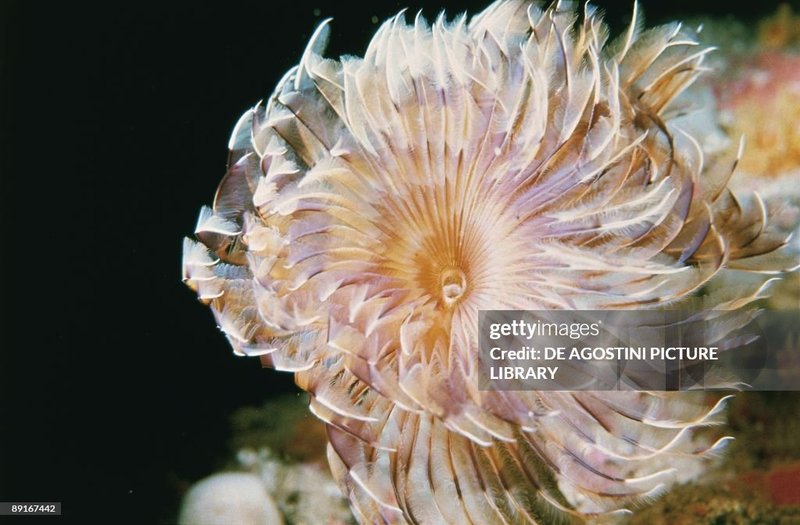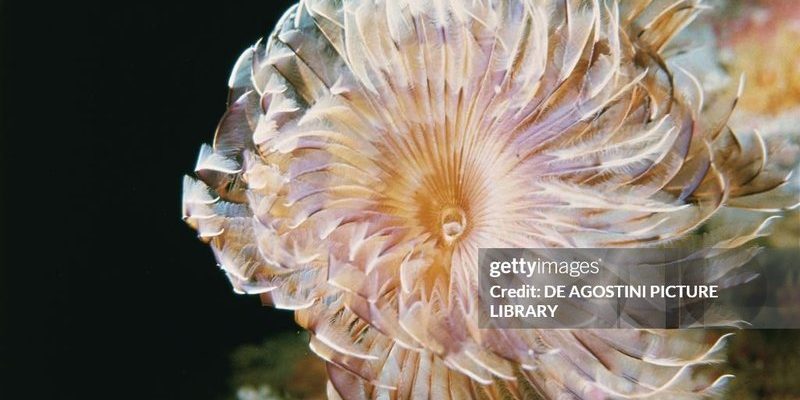
These worms are often underestimated, but they act like nature’s little vacuum cleaners, constantly working to clean up the water and contribute to the overall health of their ecosystem. They create complex dwelling structures that provide shelter for other tiny critters. So, what exactly do these worms do, and why should we care about their role in soil and aquatic ecosystems? Let’s dive deeper.
What Are Sabellid Fan Worms?
Sabellid fan worms belong to the family Sabellidae, a group of marine polychaete worms. They’re often found in oceans around the world. Picture them as colorful, feathery structures protruding from the seafloor, waving around in the currents. They can grow to about 10 inches long, with their fan-like heads resembling a delicate feather duster.
These worms live in tubular homes made of sand particles and other materials, which they glue together. Each worm has a distinct way of decorating its tube, making their homes a unique display. They rely on a system of filter feeding, where they use their feathery crowns to catch plankton and organic matter from the water. It’s a bit like having a built-in buffet!
The Role of Sabellid Fan Worms in Aquatic Ecosystems
You might be wondering what exactly these colorful creatures contribute to their habitats. For one, Sabellid fan worms are excellent filter feeders. They help to maintain water quality by consuming excess nutrients, which prevents algae blooms. This is important because too much algae can create dead zones, areas where aquatic life struggles to survive.
In addition to cleaning the water, their tube structures serve as habitats for other marine organisms. Small fish and invertebrates often take refuge in these tubes. This makes Sabellid fan worms a crucial building block in the food web. They support a diverse range of life, making the ecosystem healthier overall.
Impact on Sediment Stability
Now, let’s shift our focus to how Sabellid fan worms affect the seabed itself. The tubes they build don’t just provide shelter; they also contribute to sediment stability. Their presence helps bind and stabilize the sand and mud on the seafloor. This is especially crucial in environments that experience strong currents or tides.
When the sediment is stable, it encourages the growth of other plants and organisms. Consider it as creating a solid foundation for a house; without it, everything could collapse. So, in many ways, these little worms are tiny engineers of their underwater world.
Role in Nutrient Cycling
Sabellid fan worms play another essential role: they help with nutrient cycling. As they feed, they consume organic matter and then excrete nutrients back into the environment. This process enriches the surrounding water and sediment, making nutrients available for other organisms, like plants and phytoplankton.
Imagine a garden where nutrients are constantly being recycled. That’s essentially what Sabellid fan worms do in their aquatic ecosystems. This nutrient cycling promotes healthier biological communities, supporting everything from tiny microorganisms to bigger fish.
Effects on Soil in Terrestrial Ecosystems?
You might think Sabellid fan worms are all about water, but their influence can stretch beyond aquatic environments. When they die or are disturbed, they contribute organic matter to the sediment. This organic material can eventually make its way into surrounding terrestrial ecosystems, enriching soils and enhancing plant growth.
Think of it like this: as these worms break down and decompose, they’re indirectly feeding the land, making sure nutrients aren’t confined to the water. This connection between soil and water is essential for maintaining biodiversity and ensuring that ecosystems remain interconnected.
Threats to Sabellid Fan Worms
Despite their important roles, Sabellid fan worms face several threats. Pollution, such as runoff from agriculture or industrial waste, can severely impact their populations. Toxic substances can harm their ability to feed and reproduce.
Climate change is another factor. Rising temperatures and ocean acidification can disrupt their habitats. As water temperatures change, their delicate balance can be thrown off, affecting not just the worms but the entire ecosystems they support.
Protecting Sabellid Fan Worms and Their Habitats
So, what can we do to help? One major step is reducing pollution. Simple actions like avoiding plastics, properly disposing of waste, and supporting sustainable practices go a long way. It’s all about keeping our waters clean to ensure that these little creatures and their ecosystems thrive.
Additionally, advocating for marine protected areas can safeguard their habitats. These conservation efforts help maintain the balance of life in the ocean and protect not just Sabellid fan worms but countless other aquatic species.
The Sabellid fan worm may seem small and insignificant in the grand scheme of nature, but it plays a giant role in both aquatic and soil ecosystems. From improving water quality to enhancing nutrient cycling, these worms are vital for ecological balance. By understanding and protecting them, we can ensure healthier environments for all life forms.
Next time you think about the ocean, remember these tiny builders and cleaners. Their contributions may be hidden, but they are essential to the well-being of our planet. So, let’s appreciate the wonders of nature, one feathery worm at a time!

